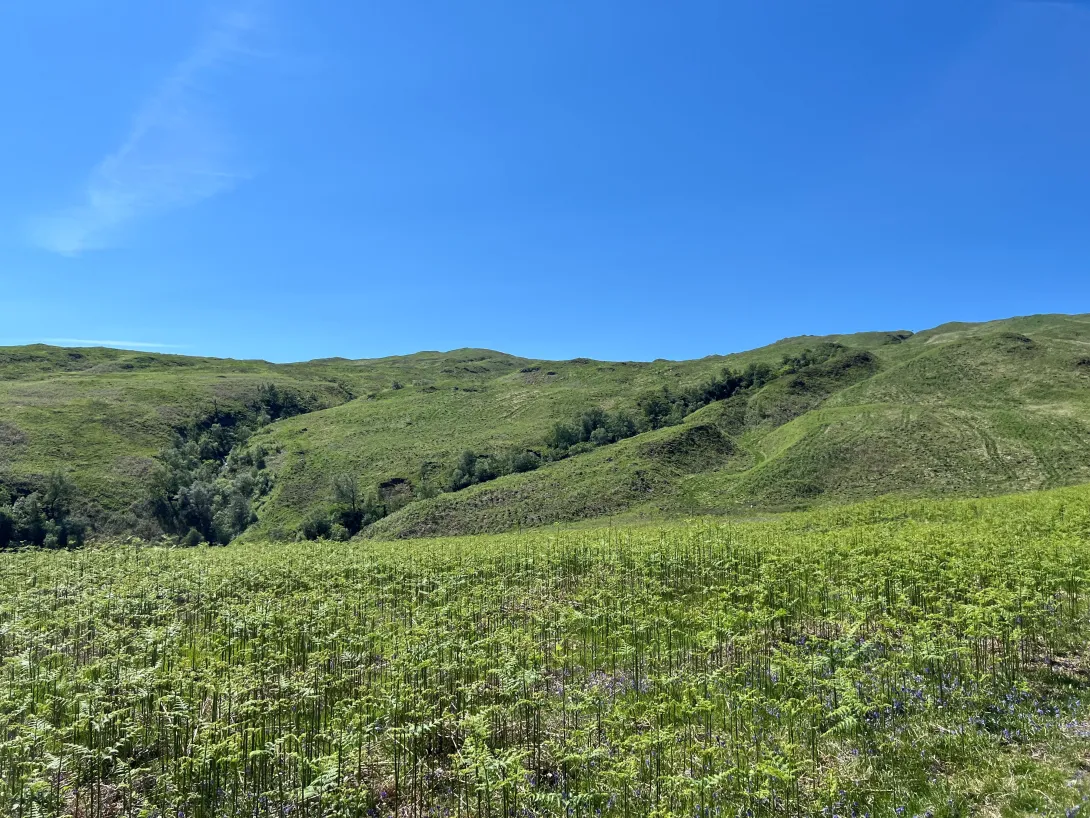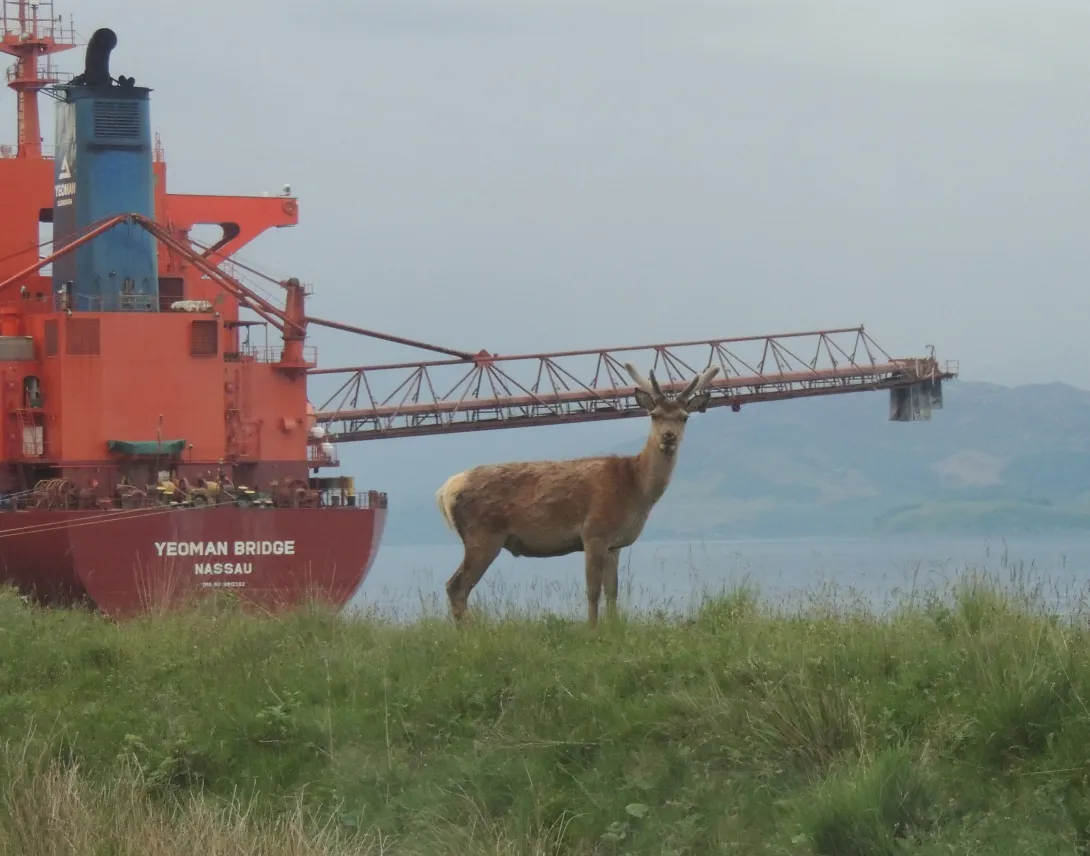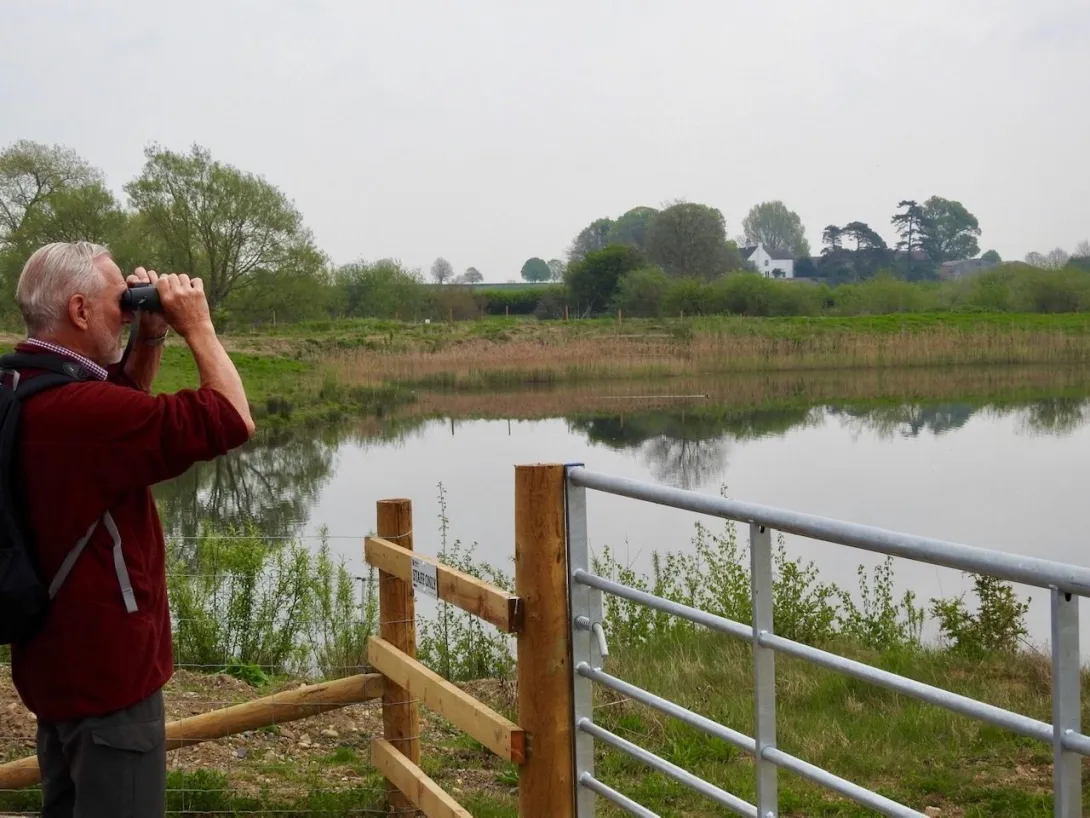no better time to think nature positive
Tom Redfern, Senior Sustainability Specialist at Aggregate Industries, asserts the urgency for UK organisations to step up on nature, including biodiversity, ahead of the landmark COP16 summit, and demonstrates how a construction materials supplier is taking the lead in delivering a strategy on nature.

The carbon space has really matured over recent years and COP26 was another milestone moment; but now, nature is the new kid on the block. Nations of the world – and businesses within them – are turning their attention beyond carbon emissions and looking to take a more
holistic approach to reducing their impacts on the planet.
Globally, over one million species face extinction. The abundance of native species in most land-based habitats has fallen by at least 20% since 1900. In the UK, 40% of species are in decline, and a quarter of mammals are threatened with extinction 2 , which has led to the UK becoming one of Earth’s most nature-depleted nations.
Biodiversity is essential to the functioning of Earth. Without it, we would lack the ecosystem we need to provide the air we breathe and food we eat. Put simply, we would not survive without nature, and it’s vital it gets the attention it deserves within the wider sustainability conversation.
What’s so special about COP16?
COP16 will be a landmark event in truly putting biodiversity firmly on the UK business agenda. It will see for the first time nations across the globe sharing their actual progress to date on nature and biodiversity. Since the Kunming-Montreal Global Biodiversity Framework came to fruition at COP15, nations have been focusing in on their 30x30 plan – the effective protection and management of 30% of the world’s land and water by 2030. The 30x30 target is the biggest conservation commitment the world has ever seen. But it’s time to look beyond words and look to really see biodiversity and nature protection in action.
For UK businesses, this is particularly important amidst the recent accusation made by Wildlife and Countryside Link (WCL) that the UK is not on track to meet its 2030 target, with just 9.7% of seas and 3% of land effectively protected for nature. It might feel like the 30x30 plan is an impossible goal to achieve, and it certainly can’t be solved alone, but it's vital that businesses now take heed of a greater regulatory landscape to strategise and put plans in place for real action to tackle the nature crisis.

Sustainability in construction
Coming from an industry where the primary business model relies on the extraction of natural resources, it may seem ironic to be moralising the importance of a nature positive future, when in fact our whole business process begins with quarries. We certainly don’t shy away from this fact and we actively manage nature throughout our quarries’ active life as we try to manage the fine balance of operations with everything that calls a quarry home.
However, what many may not realise is that we are also a sector that has long recognised its impact on nature and has successfully created 100’s of nature reserves and Sites of Special Scientific Interest (SSSI). At Aggregate Industries, we are committed to not resting on past successes and want to challenge ourselves to do more than ever before. That is why we have launched our first company-wide nature strategy this summer, aligned to Science Based Target Network for Nature Framework – furthering our commitment to a sustainable future.
Developing an effective nature strategy
When developing our nature strategy there were key elements we looked at during the process:
Benchmarking
When we created our nature strategy there was nothing similar within our own industry on which to benchmark against, however we were able to survey a cross-section of other industry strategies to draw inspiration and comparison. However, it did become clear that nature strategies are not all that common!
Policy landscape review
The landscape of policy and regulation is ever-changing, and COP summits will continue to place nature and biodiversity higher on the agenda, with new frameworks and deliverables to meet. It was important to look at what’s relevant now to inform our strategy and targets, but the review also demonstrated the importance of not always planning too far ahead, given that rules and frameworks evolve so quickly.

Materiality assessment
This was most important to our preparation work. We have over 200 sites producing aggregates, asphalt, concrete and cement and so we had to be realistic when looking at areas where we could make an impact. We looked at our portfolio to ascertain where we could make
the biggest impact first; for us, that was our quarries. At the time of developing the strategy, we had already begun to make real strides in prioritising nature at our quarries, including a new 64-hectare woodland planted at our Glensanda Quarry. This 105,000-tree plantation, located in a remote and environmentally under-recorded part of Scotland, builds on a previous much smaller 14-hectare scheme that we planted in 2014.
Clear and measurable targets
We realised during this process that not every commitment has to be ground-breaking, and in fact smaller, quickly achievable targets build momentum towards longer-term goals. In the first draft of our strategy, we set our targets for 2030, but with the evolution of the wider landscape we felt shorter term targets to 2026 worked better and provided clear accountability. Nature still has a long way to go to become what ‘carbon’ is now. This is particularly true in terms of measuring, reporting and managing improvements and impact, an area where we believe there will be real growth.
Empowerment
A strategy must be for the employees as much as the employer, and it’s vital they feel part of the overall sustainability journey. For us, that meant providing individual areas of ownership, a key element of which is creating ‘a place for nature’ across all our 200 sites nationwide. Empowerment also expands to the wider supply chain as we won’t solve the nature crisis alone. Advocating, guiding and influencing those businesses around us to join our nature positive journey is necessary, and by next year we’ll have a better understanding of which of our suppliers have the greatest potential nature impact, and hold nature workshops for those in our supply chain.
Tackling the nature crisis won’t happen overnight, but making a start and creating a strategy will provide your business with a common goal, targets to meet and the accountability to meet them.
At Aggregate Industries, we will review and re-publish our nature strategy in 2026, by which time we anticipate having met all the targets set out in our current strategy and will have a clearer picture on what we can then achieve by 2030.
The conversation will have certainly moved on, and nature and biodiversity by then will be even higher on the agenda. It’s important for businesses across all sectors not to fall behind, and to accelerate their focus on reducing negative impacts on the planet, restoring nature and habitats, and advocating for nature throughout the value chain.
We recognise that during this time we’ll be learning, growing and sharing our experiences with others, to deliver the nature-based solutions needed to become Nature Positive by 2030.
Aggregate Industries full nature strategy can be read here.
*This article first appeared in Edie.
Press contacts
-
Telephone
01530 510066
-
Email

“At Aggregate Industries, we are committed to not resting on past successes and want to challenge ourselves to do more than ever before. That is why we have launched our first company-wide nature strategy this summer, aligned to Science Based Target Network for Nature Framework – furthering our commitment to a sustainable future."
- Aggregate Industries ventures into East Anglia with 800,000T capacity site
- Aggregate Industries launches the industry’s first carbon reporting tool to offer customers accurate carbon data by product or project
- Multi-million pound investment in state-of-the-art facility at the port of Liverpool
- Aggregate Industries launches significant report to analyse the true cost of coastal erosion
- Breaking new ground - Trial of new low carbon Foamix product complete
- New zero emissions mixer truck a thing of electric dreams
- A smooth sailing job as Aggregate Industries makes emergency return to boost Minehead's sea defences






